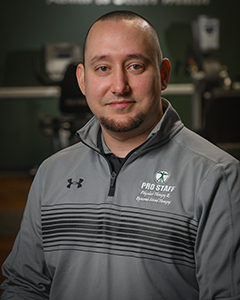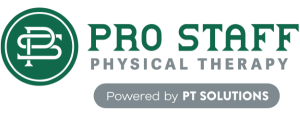Tips for when it feels like even your pillows are against you.

We’ve all been there. Experiencing harsh neck and shoulder pain limits your motion, and you don’t even know where it came from. Did you work out too hard? Did you sleep wrong? Where did this come from?
Most of us have experienced neck and shoulder pain at some point and, for some, more frequently than others. Neck and shoulder pain is often caused by a range of lifestyle factors, including bad posture, poor diet, or stress. In most cases, making small adjustments to these problem areas can prevent and ease neck and shoulder pain. This article can help identify the causes for pain in these areas, how to treat them, and how to know when it is time to see a physical therapist for help. Remember, mild symptoms can be treated with home remedies, but consistent pain should be treated by a professional.
What causes neck and shoulder pain?
First of all, the shoulder is a ball and socket joint with a large range of motion. The most common pain in this area can stem from overexertion, injuring the soft tissue of the muscles, tendons and ligaments. But, there can be other culprits as well:
- Poor Posture
- Pinched Nerves
- Muscle Strains
- Dislocated Discs
- Frozen Shoulder
Abnormal conditions involving the spinal cord, heart, lungs, and some abdominal organs can also cause neck and shoulder pain, or what’s call “referred pain.” Here are some examples:
- Broken collarbone
- Bursitis
- Heart attacks
- Broken shoulder blade
- Rotator cuff injuries
- Shoulder separation
- Whiplash injury
- Tendonitis
- Gallbladder disease
- Inflammation under the diaphragm
How can I ease my neck and shoulder pain?
Your initial response to unknown pain is probably, “Why does my neck hurt?” There are some easily detectable issues that may occur during daily activities such as sitting at a desk all day, or even your sleeping habits. Try incorporating these 5 tips into your everyday life to discover which habits – or maybe all – are causing you pain and how to avoid or resolve it moving forward.
Posture
It is extremely important to maintain proper posture. Whether you’re at your desk or behind the wheel, make sure you are bottomed into the back of your seat. In your car, make sure your seat is set to a comfortable, upright position (check this helpful guide for proper driving posture and wheel distance). At your desk, adjust your computer screen so it rests at the proper height to match your eye level. Adding blocks or books under your computer to raise it is a simple solution without breaking the bank. For more tips and tricks to correcting your posture, make an appointment with your local PT.
Pillows
Stick to one while sleeping! It can be easy to pile up comfy pillows that turn your bed into a cloud, but the reality may mean more damage to your neck by sleeping at an unnatural angle. Sleeping on your stomach can also cause you pain by twisting your head for hours at a time. If you feel you need firmer support for your neck, check out Dr. Jessica Howard’s towel trick!
Stress
Understanding a work-life balance is the first step to keeping a stress-free environment. Promoting simple habits such as proper exercise, reducing caffeine intake, and focusing on breathing can help reduce stress. When you do not manage stress, it can create a condition called tetany. Tetany means tight muscles, and the neck and shoulders are very commonly affected.
Movement
Staying in one position for too long can cause a stiff neck and tense shoulders. To avoid this, be sure to stand and move every 20 minutes to keep your muscles loose. This also helps with making sure you are not sitting in a poor position for your body. The more you move, the more you can readjust yourself to be in the correct position for healthy posture.
Stretching
Regular stretching can keep neck and shoulder pain at bay. Try tilting your head to one side and at the same time drop the opposite shoulder. Hold it for 30 seconds and repeat on the other side. Next, look squarely over each shoulder for 30 seconds. For assistance in proper technique and form, request an appointment with one of our expert physical therapists!
Read this article to understand the importance of stretching daily
For milder cases, basic home care measures are adequate until your doctor can see you. In many cases, simple injuries, such as strains and bruises, heal themselves and do not require an office visit. If you experience severe or worsening pain, weakness, numbness, coolness, deformity, or color changes, call your doctor or go to a hospital emergency department immediately.
Takeaway
Dealing with neck and shoulder pain every single day can be a painful experience no one should have to go through. These tips can certainly be effective for milder cases of neck and shoulder pain, but for the most extreme cases, we recommend visiting your local Pro Staff. Our team of trained Physical Therapists have the knowledge and expertise to reduce that pain and ensure you are safe while exercising, or even just relaxing in a comfortable – but proper – form. Again, the at-home solutions in this article are meant to remedy mild cases. For persistent or recurring pain, make an appointment with one of our experienced PTs at a location near you.
Pro Staff Institute, LLC, has a network of outpatient physical rehabilitation centers in New Jersey. Pro Staff was founded in 2010 by Frank Pavlisko and Michael Maffucci. Through Frank’s 25 plus years experience in Physical Therapy and Michael’s experience in Management Services, our goal is to exceed customer expectations by providing the highest quality of service in a fun, family, friendly, and encouraging environment.
PRO STAFF LOCATIONS
OFFERING CERTIFIED
HAND THERAPY
Managing Diabetes: The Role of Physical Therapy
Managing Diabetes: The Role of Physical Therapy As of 2024, approximately 38.4 million Americans, or 11.6% of the U.S. population, have diabetes. Of these, 29.7 million cases are diagnosed, while an estimated 8.7 [...]
Staying Active and Injury-Free During Summer Activities
Staying Active and Injury-Free During Summer Activities Summer is a fantastic time to engage in outdoor sports and physical activities. Whether playing soccer, tennis, cycling, or jogging in the park, staying active is [...]
The Importance of Posture: How Proper Alignment Can Prevent Pain and Injury
The Importance of Posture: How Proper Alignment Can Prevent Pain and Injury In today's fast-paced world, where many hours are spent over desks, smartphones, and computers, posture is often neglected. Poor posture can [...]




